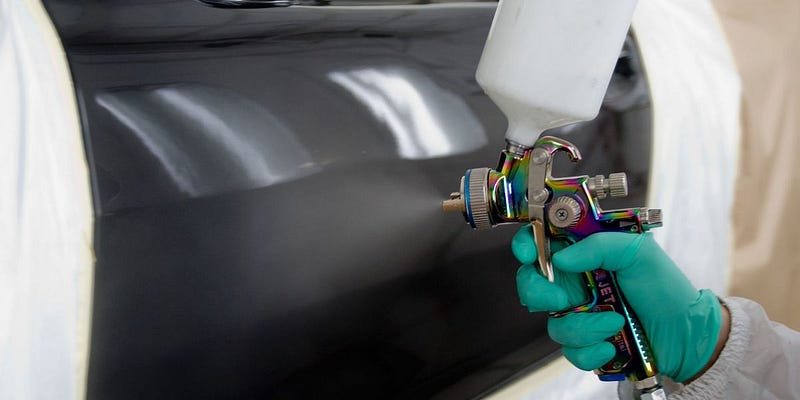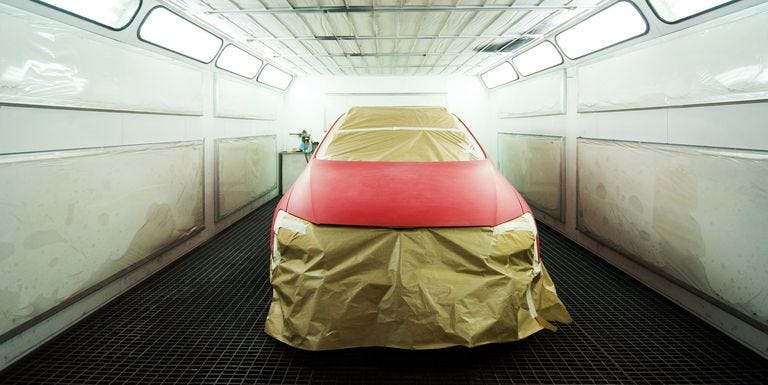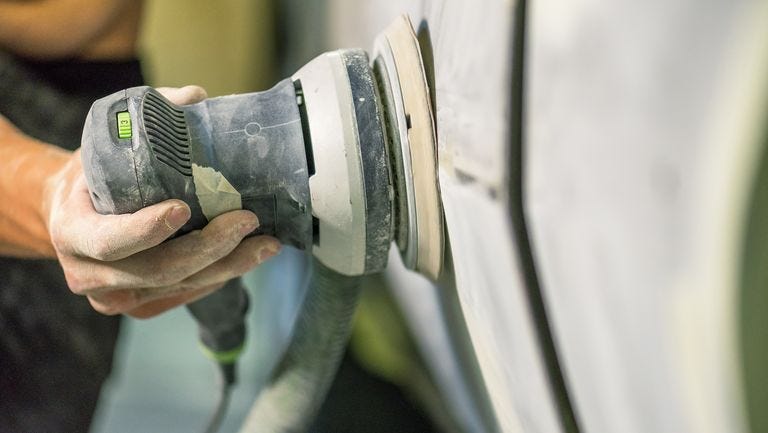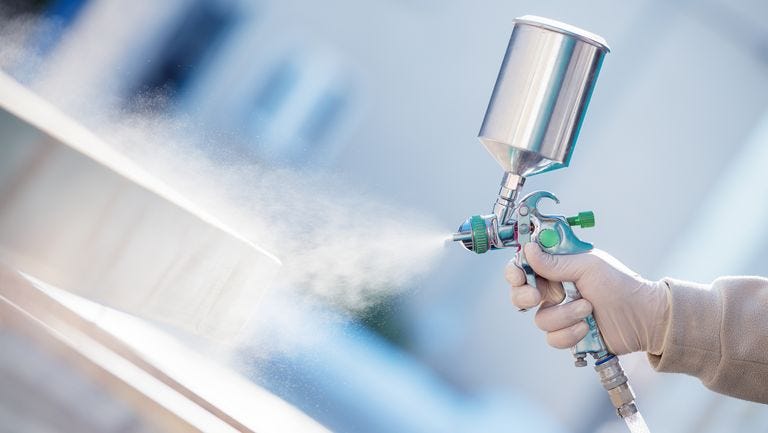How to Paint a Car the Right Away

Painting your vehicle and painting a divider in your home is a long way from something very similar. One requires a couple of paint rollers, and a jar of paint while the difference includes a reiteration of items, clear covers, preliminaries, and sprayers.
That is the reason proficient auto paint occupations can't get so expensive. The procedure is mind-boggling and there's some aptitude included, however, that doesn't mean you can't give your vehicle another look without anyone else.
This article will guide you for a quick primer on how to paint your car yourself:
What You’ll Need
First, you’ll need time. A paint job can take anywhere from several days to a couple of weekends, so finding a shed or garage-or something shielded from the elements is a big plus, but you can get by if you take certain precautions. Once you secured your painting location and set aside time to get the job done, you’re ready to gather your materials.
You’ll need more than just paint. Essential tools include 1200- and 2000-grit wet-and-dry sandpaper, an electric sander, masking tape, an air compressor or a spray gun, newspapers for masking off, face masks, safety glasses, and paint thinners.
And if you can afford a dust extractor, get one. It’s not essential but will help keep the air free of debris.
For a small- or medium-sized vehicle, you’ll need approximately one gallon of base coat or primer, three gallons of topcoat, and two to three gallons of clear coat. Larger vehicles will require about one and a half gallons of base coat, four gallons of topcoat, and three to four gallons of clear-coat lacquer. These amounts are likely more than what you’ll need-and professionals will use less-but it’s better to have too much paint as opposed to too little.
If you want to match the original color of your car, find the color code located on your car’s compliance plate. An auto paint shop will also be able to match it.
Preparation

Once you have your supplies, you should move onto preparing your workstation. First, clean your working area. If you’re working inside a shed or garage, sweep the floors and make sure you have plenty of space to work. Obstacles in the way will only make the job harder.
If you’re working outside, hose down the area with water to settle the dust and do not paint underneath a tree or anything else for that matter. Contaminants can drop onto the wet paint, ruining the finish. Then, wash the car, removing any surface contaminants such as dirt, grease, and road grime.
Before you start sanding and applying primer, decide what you want to paint. Do you want to paint the engine bay, trunk, or inner doorsills? Painting these can add time and complexity to the project, especially if you’re going to paint the engine bay, which could require some mechanical knowledge to remove the engine and other accessories. If you’re looking to improve the exterior, mask off the areas you don’t want to paint.
Click Here To Learn More on Tips to Paint Car The Right Away
Stripping

With your work area clean and a shelf full of painting products, you’re now ready to get to work. You’ll start by sanding in circular motions, removing the clear coat, topcoat, and base coat. This can be done with a sander, though you’ll like have to sand the corners and crevices by hand.
To achieve the best finish, sand the entire car back down to the bare metal, giving the new prime coat a perfectly smooth surface to adhere to. If you’re operating under a time constraint, then sand the surface to as smooth and as even as possible.
Once the car is stripped to your desired surface, wipe down the exterior with a clean rag and paint thinners. This will help remove any dust, and then wait until any residue from the thinners evaporates before continuing.
Priming
Mask off the areas you don’t want to paint and then mix the primer with the thinners. You’ll need to read the instructions for the correct ratio.
Before you begin painting, it’s best to practice. The best way to practice is to get a cheap used car panel from a junkyard or a piece of steel if lugging a door home isn’t your cup of tea. Hold the spare gun approximately six inches from the panel and spray in a side-to-side sweeping motion. You’ll want only to apply the trigger when you’re moving the spray gun. If you continuously hold the trigger down, you’ll get a continuous spray of paint. This will lead to the paint being thicker in some spots which could cause the paint to run.
With your painting technique mastered, you can start applying the primer to the car. You’ll want to work from the roof down, applying it in thin, even coats. It usually takes two or three coats to cover a surface. Each coat will take about 10 minutes to apply per vehicle panel and another 20 minutes-to-an-hour for the primer to cure between coats.
When you’re finished, the primer will have a powdery finish, which you’ll need to smooth with 2000-grit wet-and-dry sandpaper. You’ll also want to clean the spray gun and then wipe down the primed and cured surface with a rag slightly dampened with thinners. Using too much thinner could strip the primer, so be careful.
Painting

Now, you’re ready to paint. Mix the paint with the thinners using the recommended ratios on the paint instructions. You’ll use the same spraying technique you used to apply the primer for the topcoat. Just like the primer, it should take you about 10 minutes per panel to apply the paint and another 20 minutes to an hour for the paint to cure between paint applications.
Apply three to four coats using the recommended drying time specified on the paint can. Before you apply your last coat of paint, remove any powdery residue with 2000-grit wet-and-dry sandpaper and wipe down with a clean rag. Repeat the previous two steps with the clear-coat lacquer.
Before the clear coat dries, remove the masking tape used to mask off the areas you did not want paint applied, but be careful not to get any tape or paper stuck on the wet paint. Then you can let the clear coat cure for the recommended time. Once the clear coat is cured, inspect the finished job for runs or other imperfections. If you find any, you can sand back the affected area with 2000-grit wet-and-dry sandpaper and respray. Buff paint in circular motions with a buffer. Be careful not to burn the paint by holding the buffer in one spot too long.
With some practice and a methodical mindset, a DIY paint job is achievable-and you’ll have the satisfaction of doing it yourself while saving some money.
Click Here To Learn More on Tips to Paint Car The Right Away
Tags: how to paint a car at home,how to paint a car hood, how to paint a car cheap
Subscribe by Email
Follow Updates Articles from This Blog via Email



No Comments